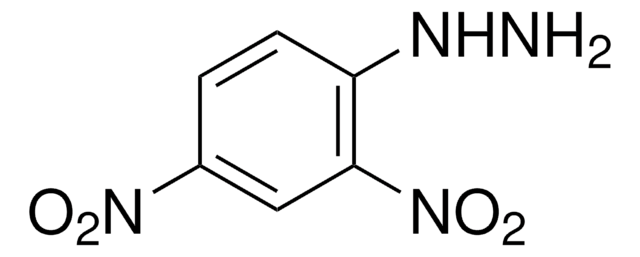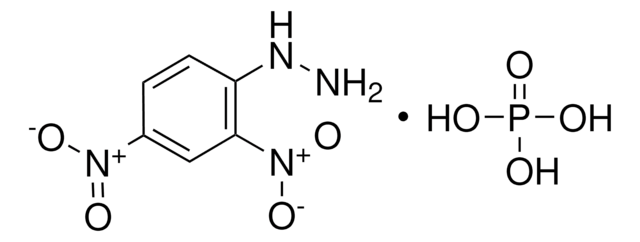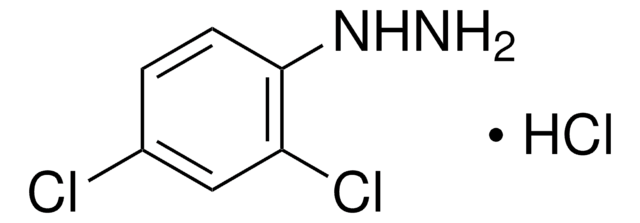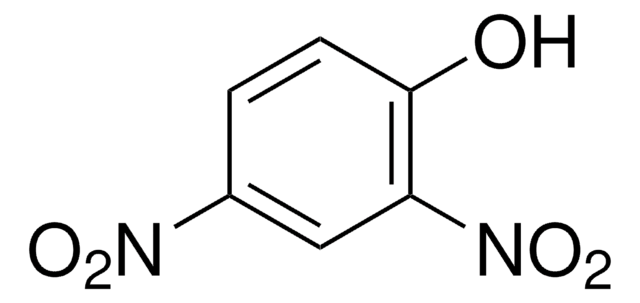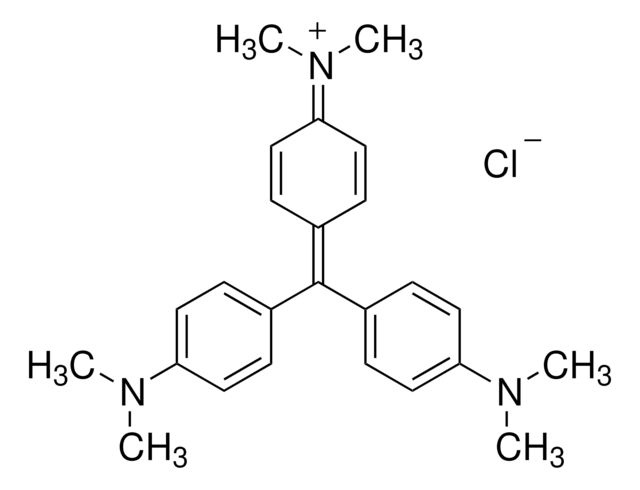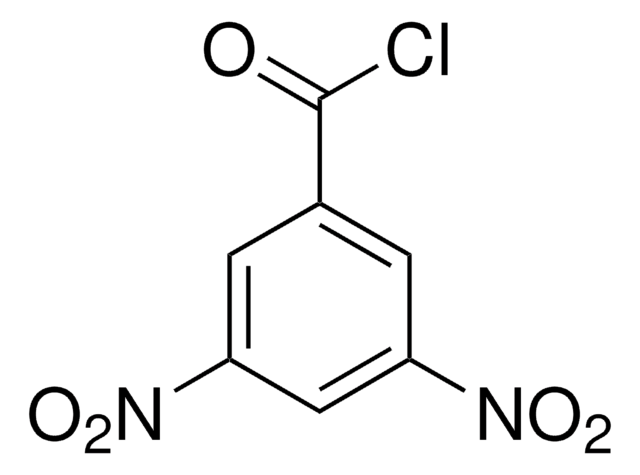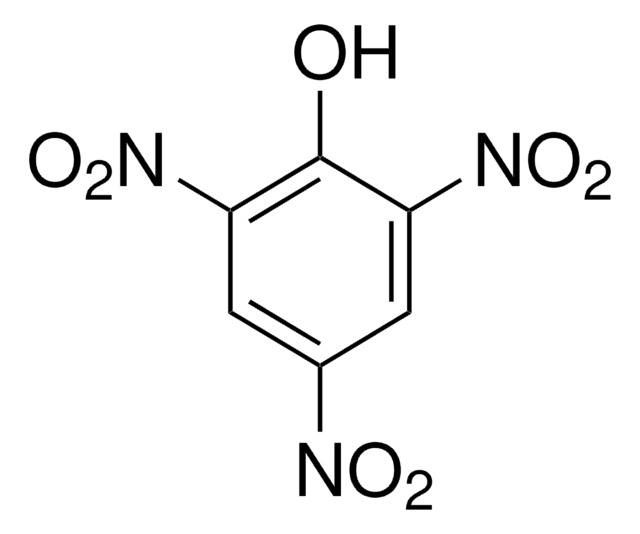All Photos(1)
About This Item
Linear Formula:
(O2N)2C6H3NHNH2
CAS Number:
Molecular Weight:
198.14
Beilstein:
615586
MDL number:
UNSPSC Code:
12171500
Recommended Products
contains
≥30% water as stabilizer (to comply with DOT regulations)
mp
197-200 °C (lit.)
SMILES string
NNc1ccc(cc1[N+]([O-])=O)[N+]([O-])=O
InChI
1S/C6H6N4O4/c7-8-5-2-1-4(9(11)12)3-6(5)10(13)14/h1-3,8H,7H2
InChI key
HORQAOAYAYGIBM-UHFFFAOYSA-N
Looking for similar products? Visit Product Comparison Guide
replaced by
Product No.
Description
Pricing
Signal Word
Danger
Hazard Statements
Precautionary Statements
Hazard Classifications
Acute Tox. 4 Oral - Desen. Expl. 1
Supplementary Hazards
Storage Class Code
4.1A - Other explosive hazardous materials
WGK
WGK 3
Personal Protective Equipment
dust mask type N95 (US), Eyeshields, Gloves
Regulatory Information
新产品
Choose from one of the most recent versions:
Already Own This Product?
Find documentation for the products that you have recently purchased in the Document Library.
Shigehisa Uchiyama et al.
Journal of chromatography. A, 1217(26), 4383-4388 (2010-05-21)
A new method for the determination of acrolein and other carbonyls in cigarette smoke using a dual cartridge system has been developed. Each cartridge consists of reagent-impregnated silica particles. The first contains hydroquinone (HQ) for the inhibition of acrolein polymerization
Ravi Ch Bollineni et al.
Journal of proteomics, 74(11), 2351-2359 (2011-06-15)
Reactive oxygen species (ROS) can oxidize proteins at almost any amino acid residue. Whereas some modifications are reversible within the cells, the higher oxidation states are especially irreversible. These irreversible post translational modifications are widely used as biomarkers of oxidative
María Linares et al.
Journal of proteome research, 10(4), 1719-1727 (2011-01-18)
Oxidative stress plays a critical role in the pathogenesis of a number of diseases. The carbonyl end products of protein oxidation are among the most commonly measured markers of oxidation in biological samples. Protein carbonyl functional groups may be derivatized
Zhihui Ai et al.
Journal of hazardous materials, 179(1-3), 141-150 (2010-03-30)
Nanocrystalline Zn(2)SnO(4) microcubes were hydrothermally synthesized and systematically characterized by XRD, SEM, TEM, XPS, N(2) adsorption-desorption, and UV-vis DRS analysis. The resulting Zn(2)SnO(4) microcubes with the edge size ranging from 0.8 to 1.2 microm were composed of numerous nanoparticles with
Laszlo Prokai et al.
Journal of chromatography. A, 1232, 281-287 (2012-02-22)
Carbonyl compounds are common byproducts of many metabolic processes. These volatile chemicals are usually derivatized before mass spectrometric analysis to enhance the sensitivity of their detections. The classically used reagent for this purpose is 2,4-dinitrophenylhydrazine (DNPH) that forms the corresponding
Our team of scientists has experience in all areas of research including Life Science, Material Science, Chemical Synthesis, Chromatography, Analytical and many others.
Contact Technical Service